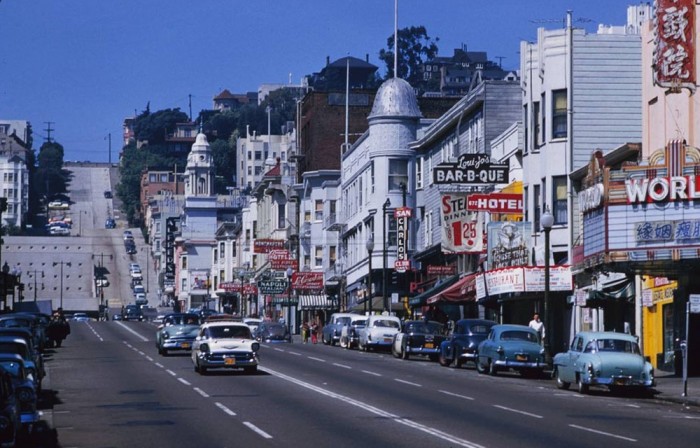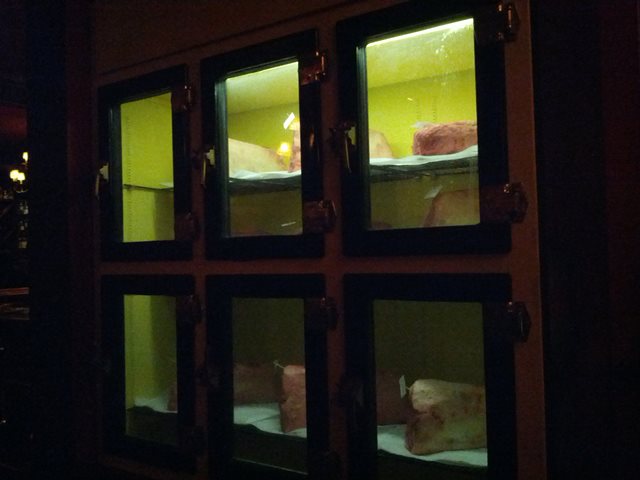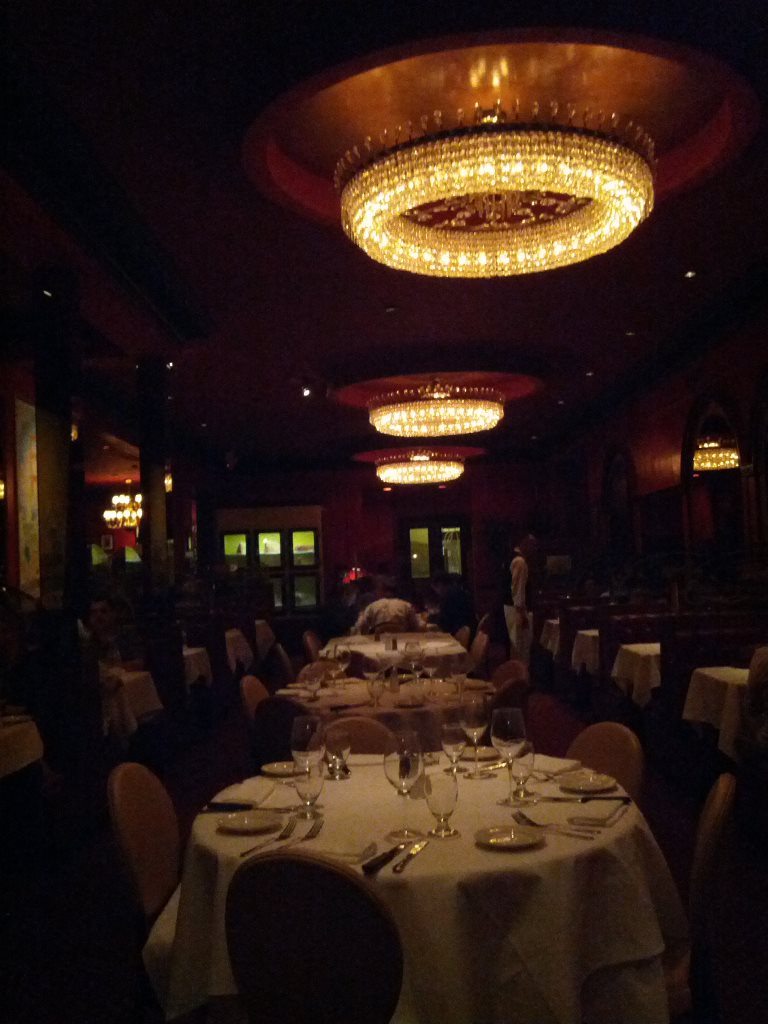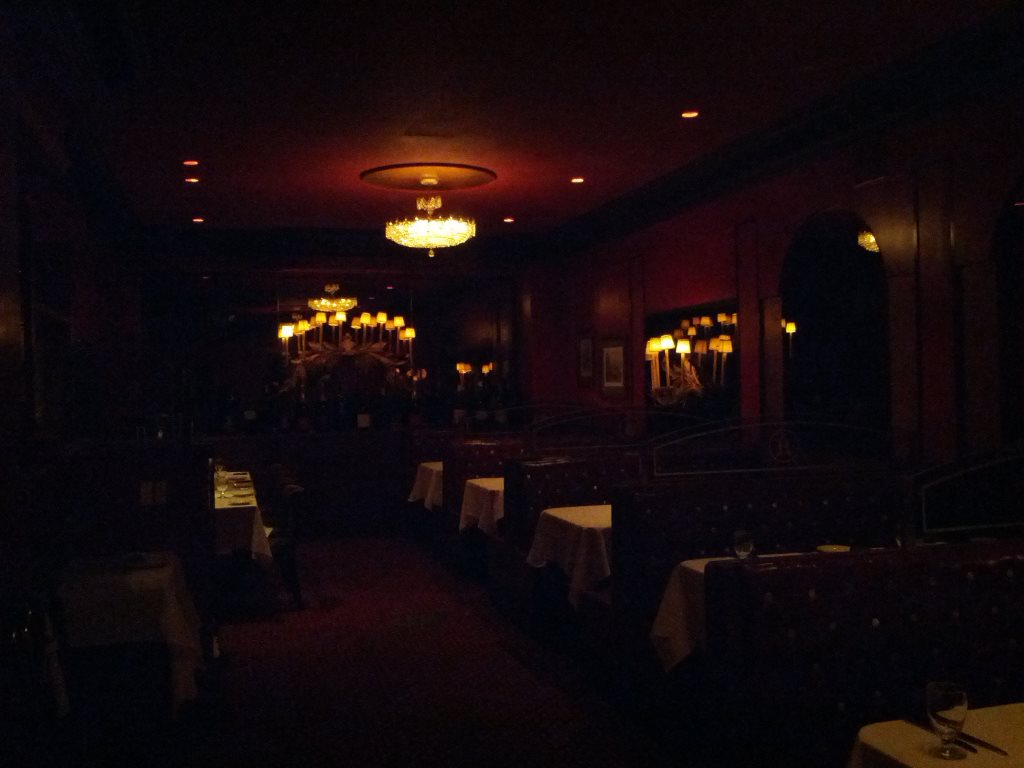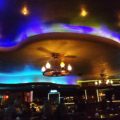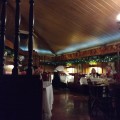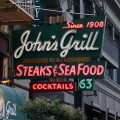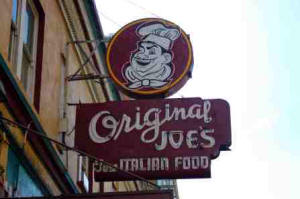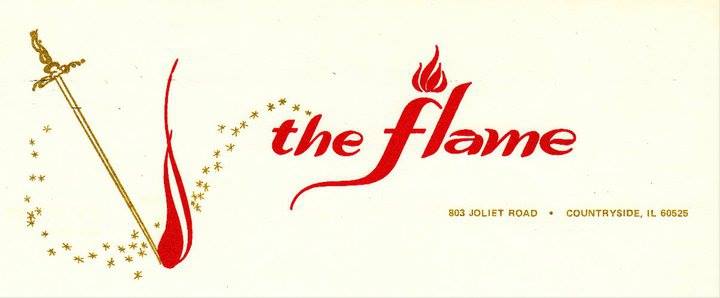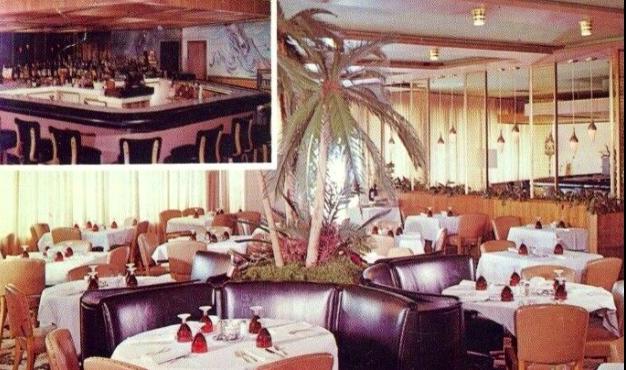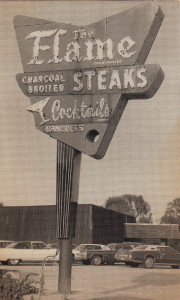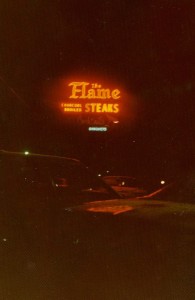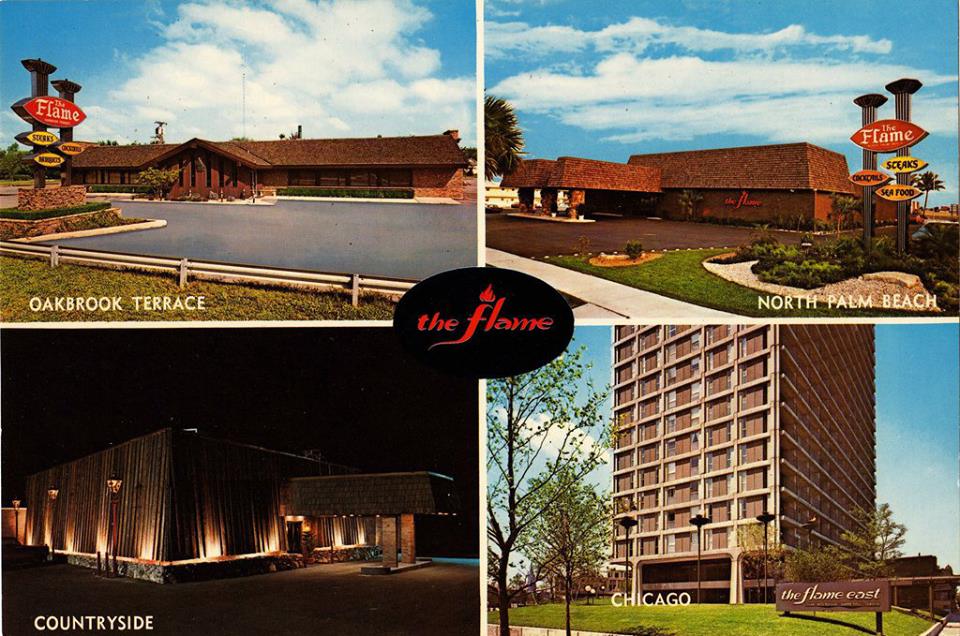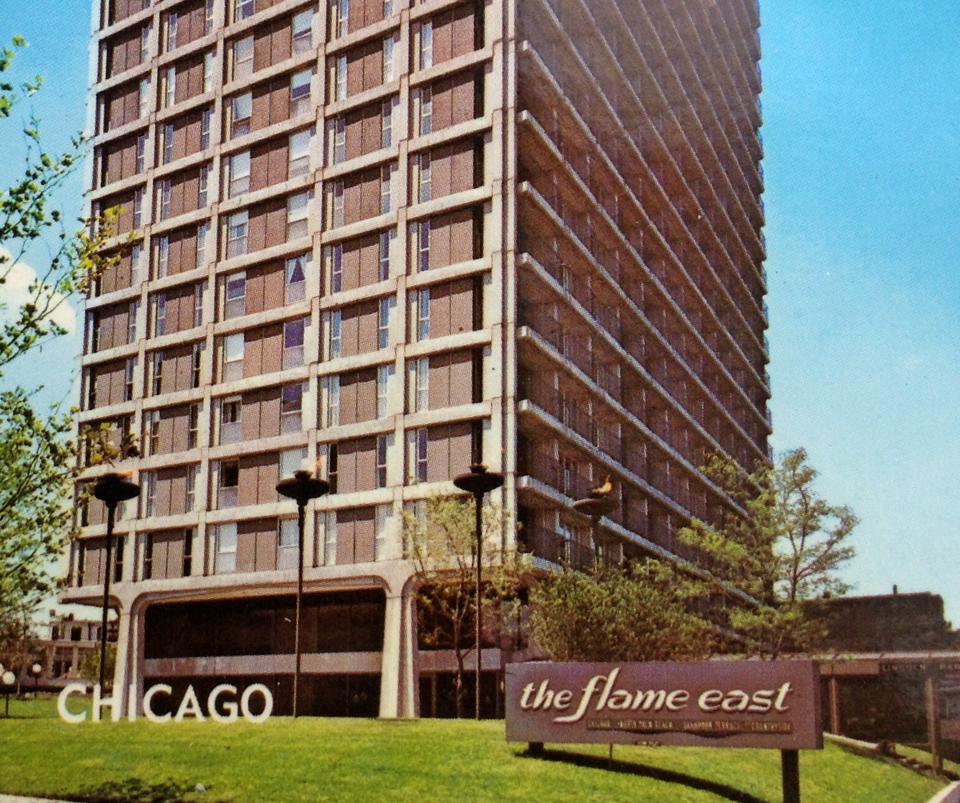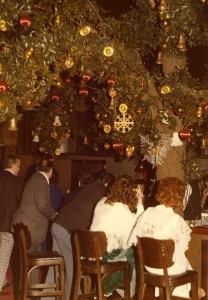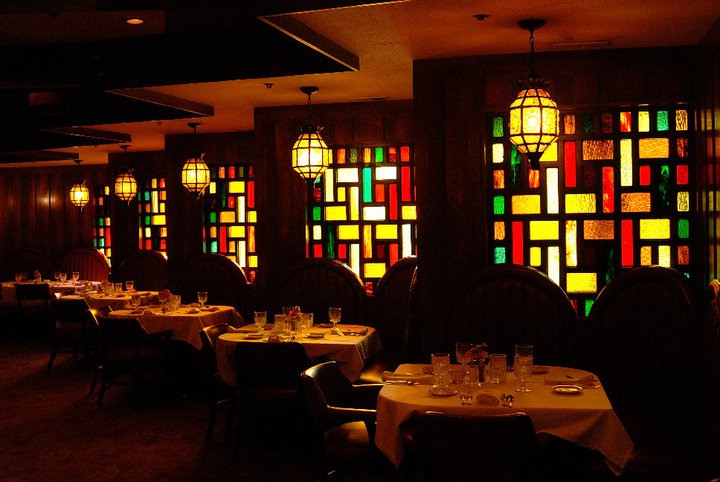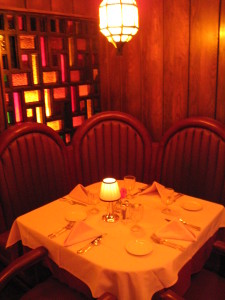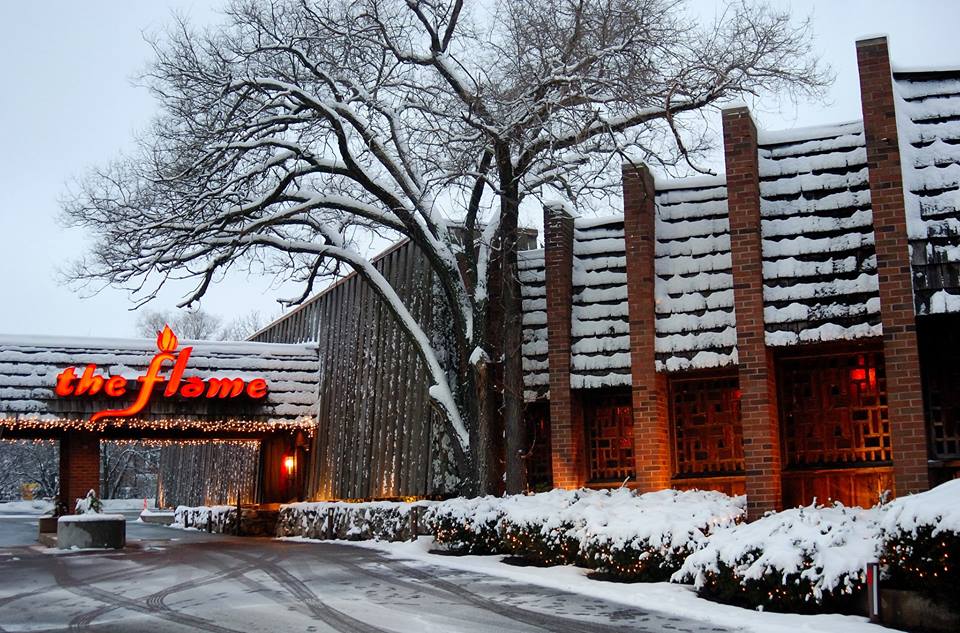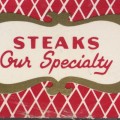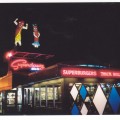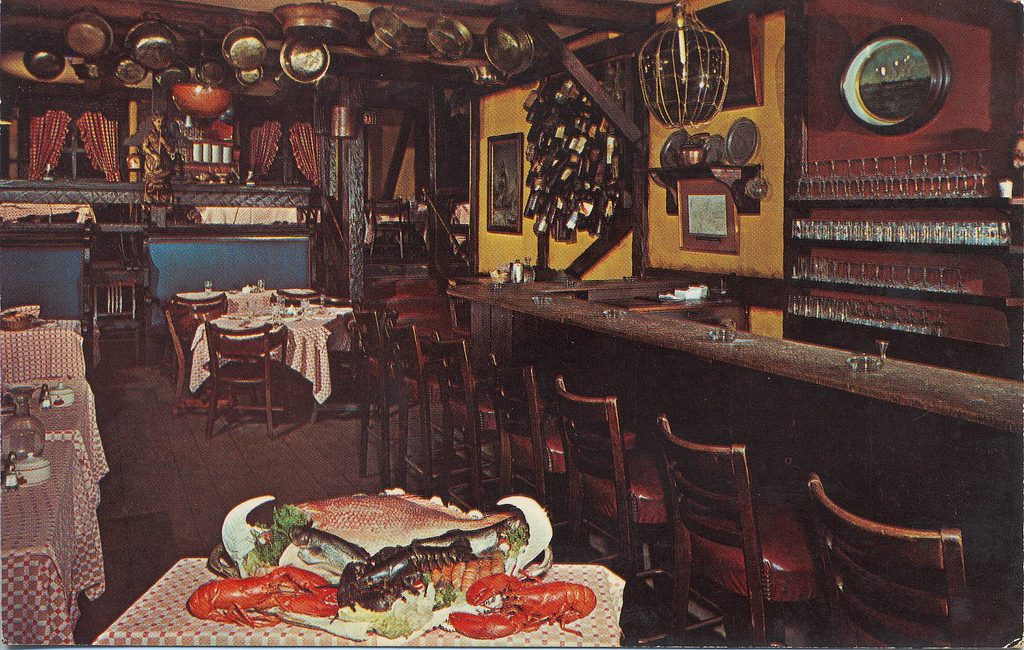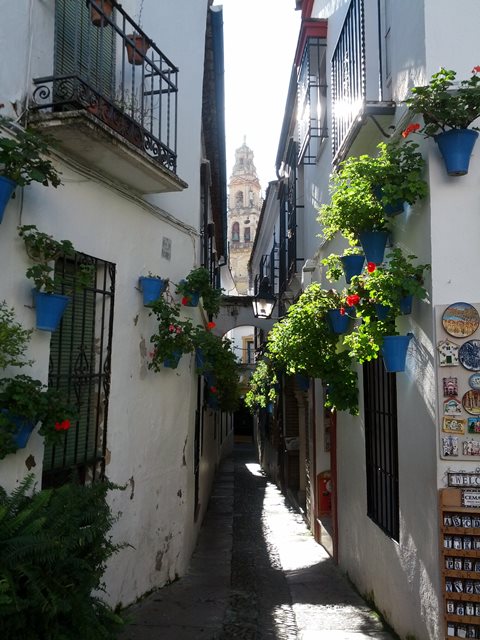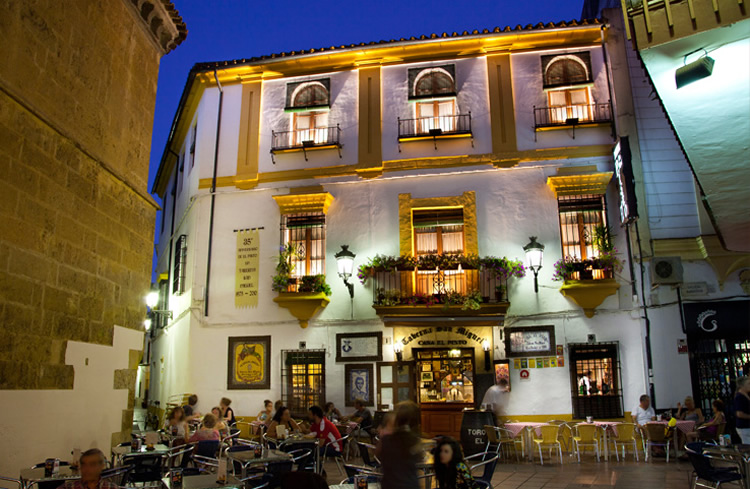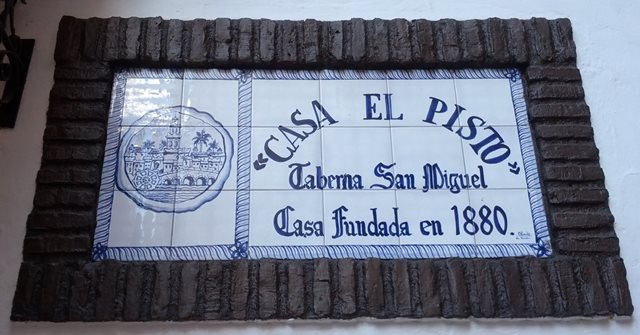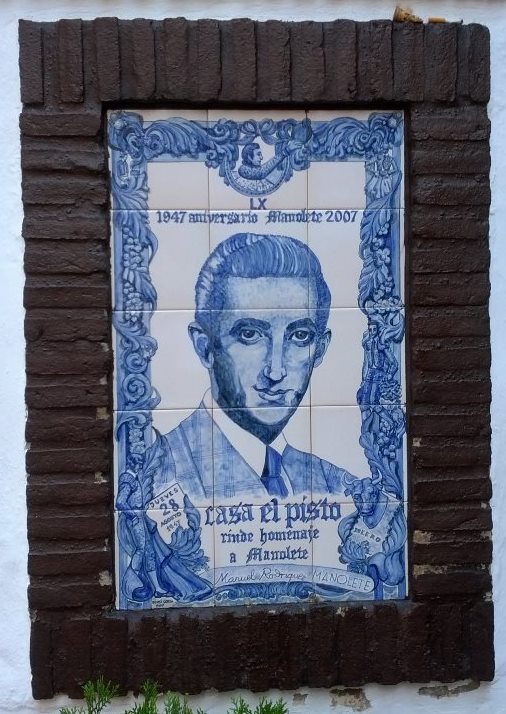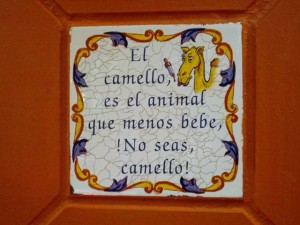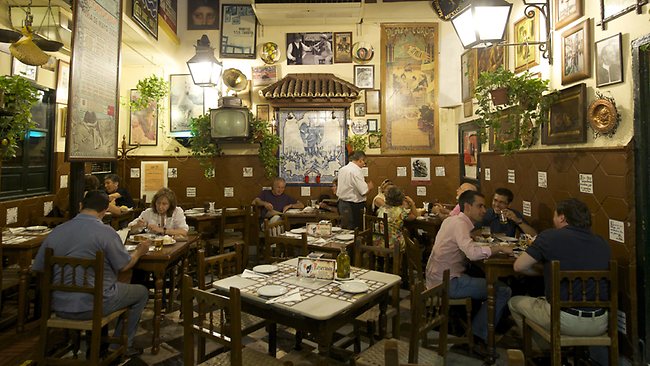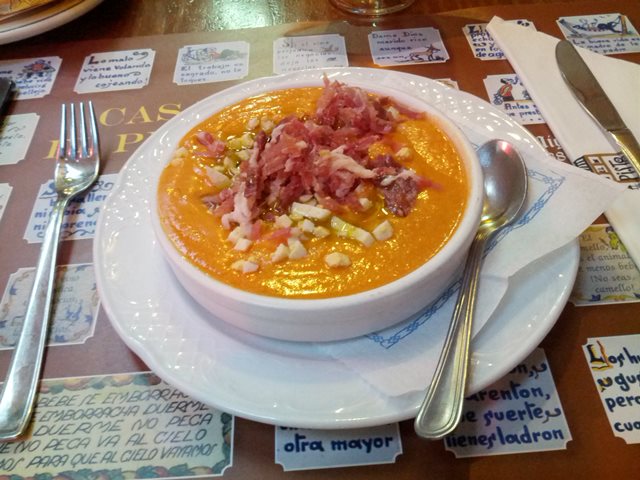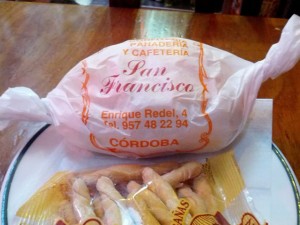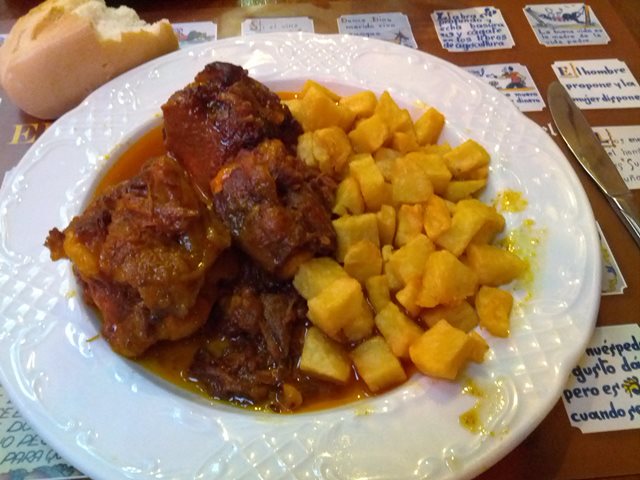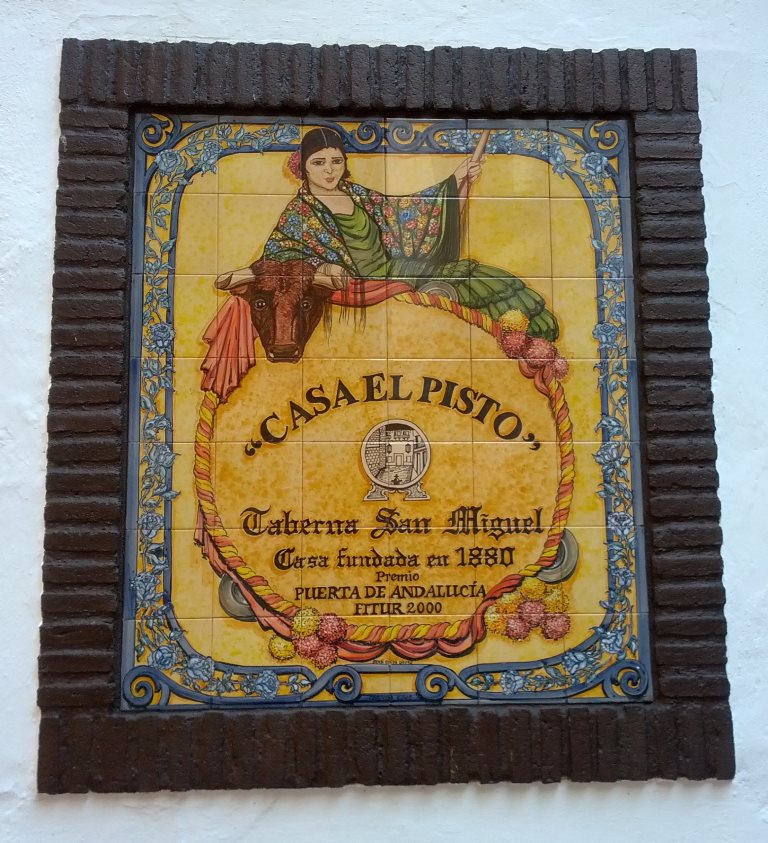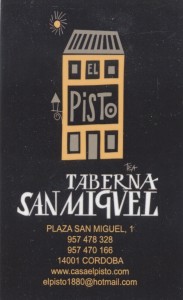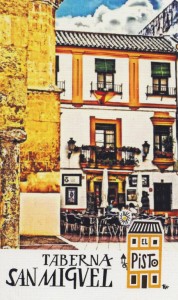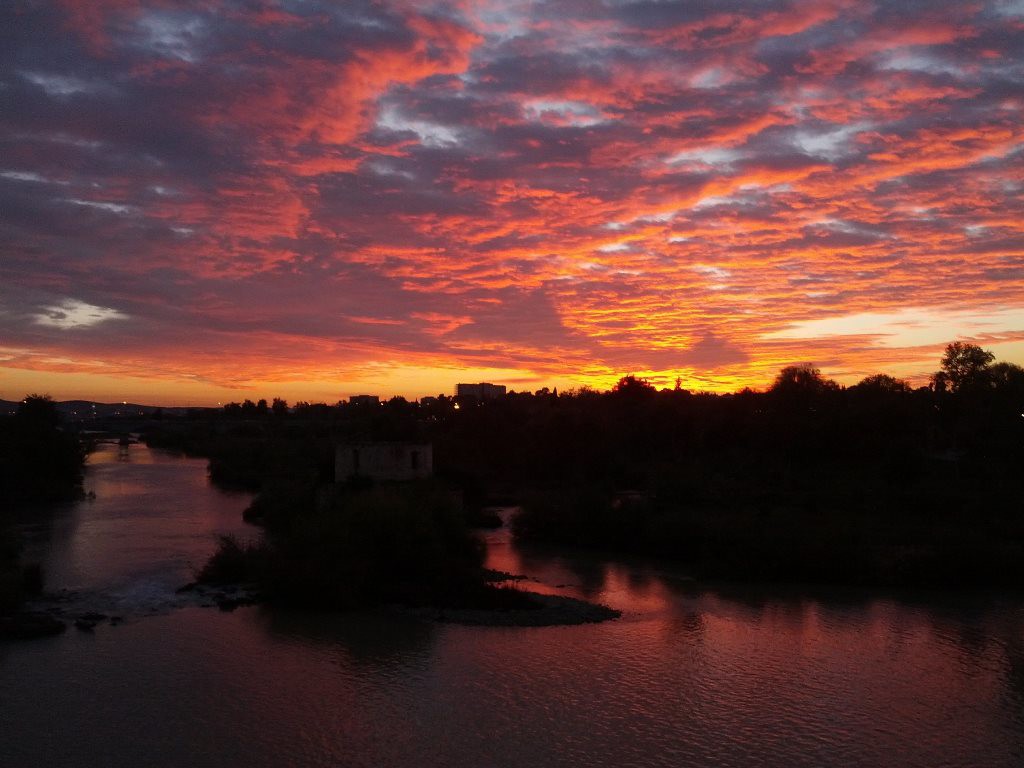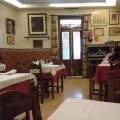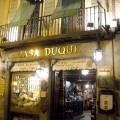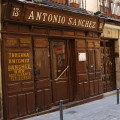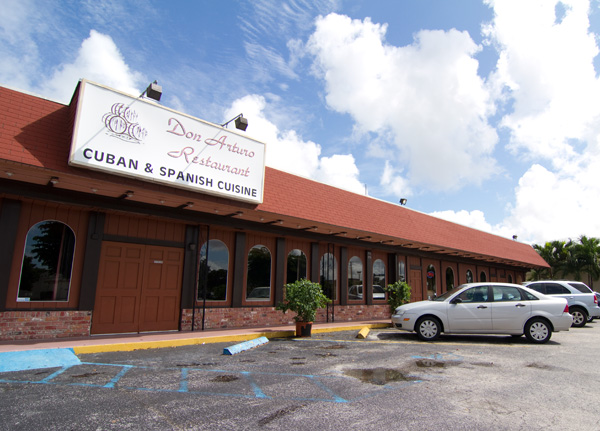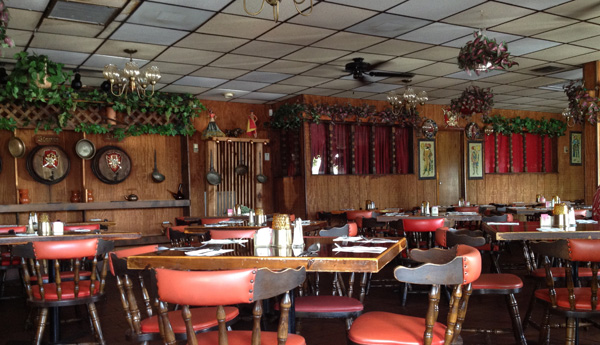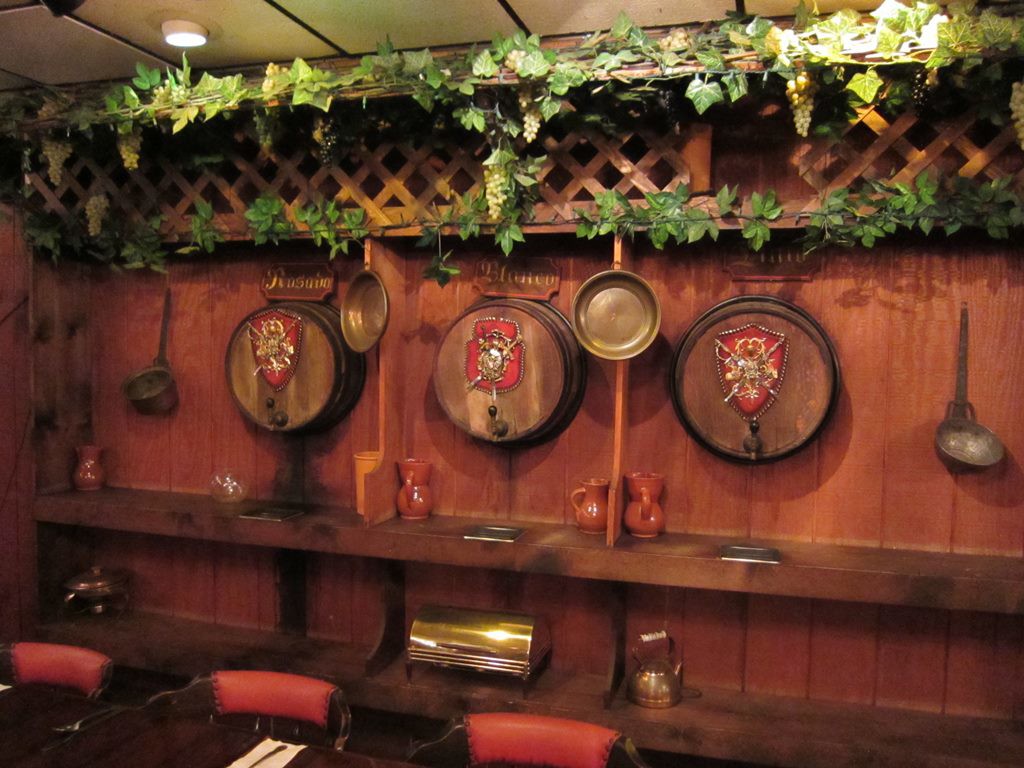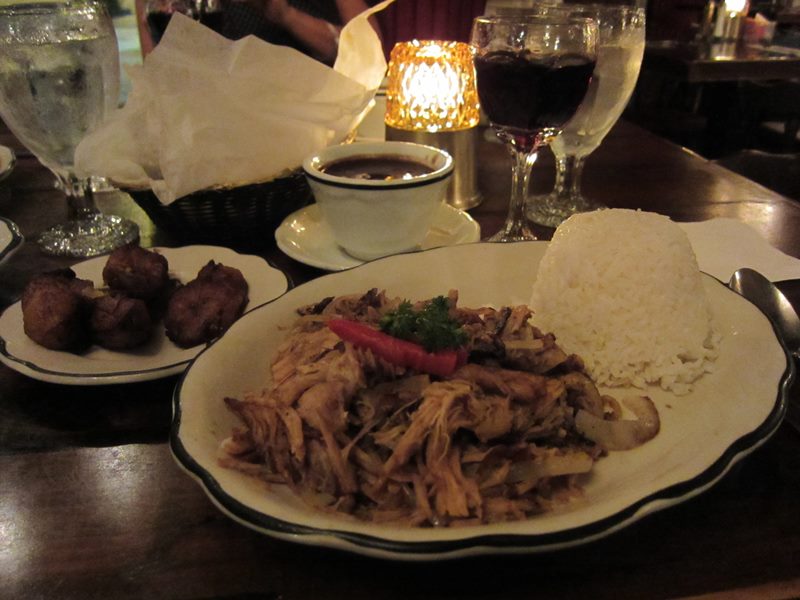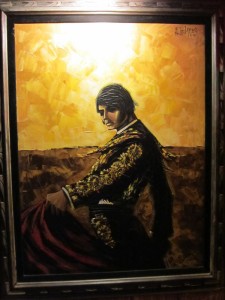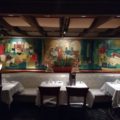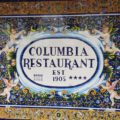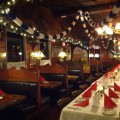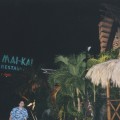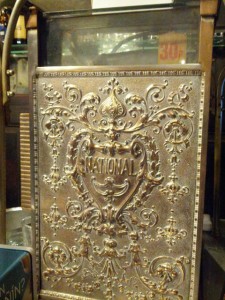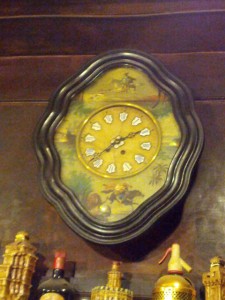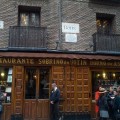For years when someone asked me what is my favorite steakhouse in San Francisco I’ve answered “Alfred’s”. There is no better combination of vintage atmosphere, a classic steakhouse menu of dry-aged steaks with traditional sides, and great service, all at reasonable prices. When I want to splurge on the best steak in the city I’ll go to Harris’ (look for it in a future post), but Alfred fills the bill for a great steakhouse experience without breaking the bank.
Alfred’s was opened in on Vallejo Street in 1928 by Alfredo Bacchini from Cattolica, Italy, who had worked his way up from a busboy to opening his own restaurant at 27 years old. He moved the restaurant to Broadway Street a year later, where it remained for seven decades, though it was moved a bit in 1952 for construction of the Broadway tunnel. Click on the following photo of Broadway looking west to see an enlarged view and see if you can spot Alfred’s next to the tunnel entrance. Jack Kerouac went there for dinner in his book On The Road.
In 1958 Alfred’s was remodeled from its original look with dark wood walls and booths, similar to how Tadich Grill looks now, into a “continental” style with tufted leather (or vinyl) booths, white linen tablecloths, mirrored walls, and three chandeliers, which are exact replicas of the ones in the Vienna Opera House (as Alfred was a big opera fan). In 1973 Arturo Petri, a North Beach native by Italian parents, purchased Alfred’s and ran it with his son Al.
In 1997 Alfred’s decided to relocate due to losing the lease on their valet parking lot. They moved into the world-famous Blue Fox restaurant’s space. The Blue Fox opened in 1920 (in a different location) and closed in 1993. Alfred’s booths, bar top, and chandeliers were all moved from the restaurant on Broadway into the new location. In 2010, Al Petri’s son Marco bought into the business and Al retired. The new generation of the Petri family thankfully has kept Alfred’s pretty much the same. The menu changed a little, but all of Alfred’s steakhouse classics remain and the decor and atmosphere have not changed.
When you enter the restaurant through the grand doors you enter the foyer (be sure to check out the vintage menus on display) and up a couple of steps to the host stand. Continuing to your right you pass the refrigerated cases where the meat is dry-aging and into the bar and lounge. There is a cocktail menu these days with some fine choices, but I usually order a martini or Manhattan with a premium spirit (they have an excellent liquor selection). The cocktails are very generous, which usually isn’t my preference because they can get warm before you finish, but here they give you the shaker so you can medicate at your leisure, so I approve.
Alfred’s has two dining rooms: the main dining room with the original booths and chandeliers…
…and the side dining room. As you can see in my photos, the lighting is dim, just how Le Continental likes it.
Alfred’s serves beef that is from the upper one-third of the USDA Choice grade. There is a lot of variation in the Choice grade and the “High Choice” grade can be practically as good as USDA Prime when it comes to flavor and tenderness. The menu offers about seven cuts of steak (some in two sizes), including a bone-in New York, Porterhouse, Ribeye (with or without the bone), and USDA Prime New York. All the above steaks are corn-finished and dry-aged 28 days. They also offer a grass-fed, wet-aged filet mignon. They have other entrees, such as lamb, chicken, and lobster. Entrees come with one side so, although the steaks are not inexpensive, they are a good value. Homemade sauces are only $1.50 extra. Excellent sourdough bread comes with your meal.
On my recent visit I tried the $55 School Night Supper (Sun-Thur), which comes with a salad or soup, a choice of one of three of their regular steaks (bone-in New York, ribeye, and filet mignon), any side, any sauce, and any dessert. Doing the math, this is a good deal if you want (and will have room for) dessert (which is basically free). But without dessert it is slightly cheaper to order the items separately. I miss their early-bird special 3-course prix-fixe dinner, which was under $40. But even at $55 the meal was wonderful, with a tasty salad, fresh vegetables, a flavorful steak that was cooked perfectly (medium rare, which I find, frustratingly, can vary a lot from steakhouse to steakhouse), and a delicious dessert.
Alfred’s adds an 18% gratuity to every check and distributes it among staff in both the front and back of the house, which is clearly stated on the menu (so don’t give them a bad review on Yelp because you didn’t know, OK?). But if you have good service (like I’ve always had) you can always (and should) give a few percent more.
Alfred’s
659 Merchant St, San Francisco, CA 94111
(415) 781-7058
Open for dinner daily 5:00pm – 9:00pm, lunch only on Thursday 11:30am – 2:00pm


